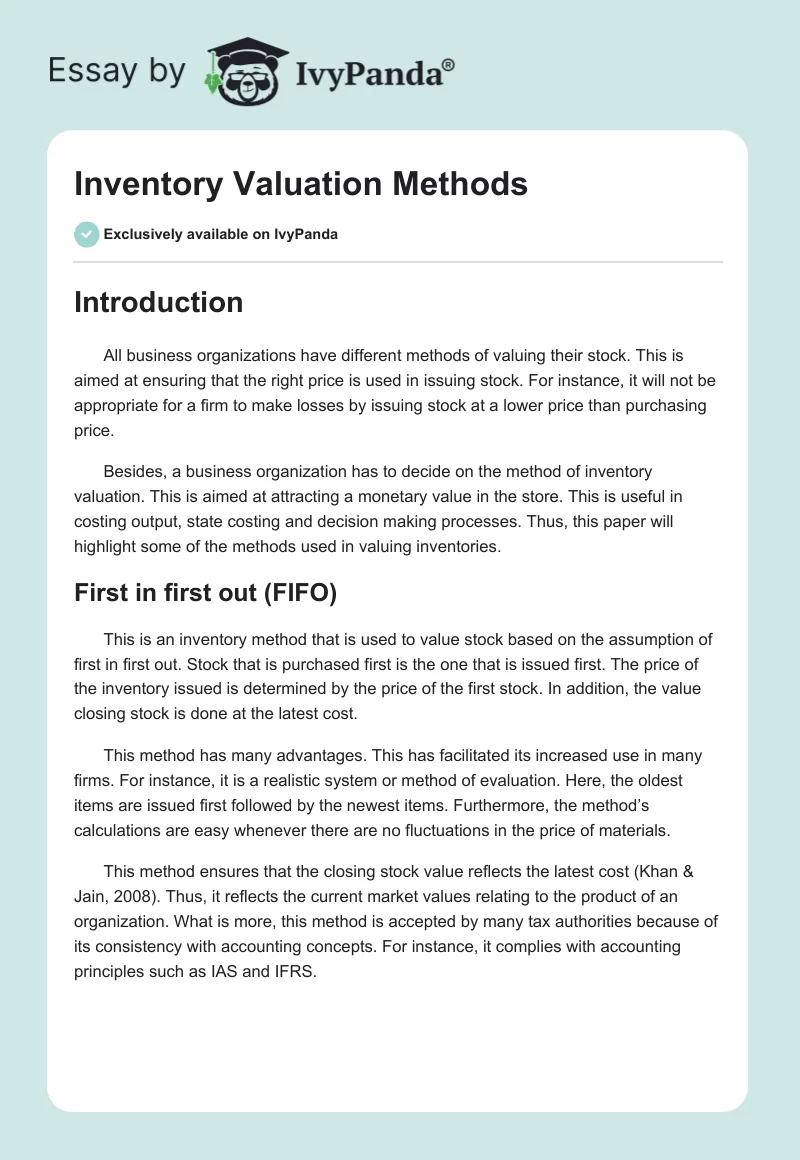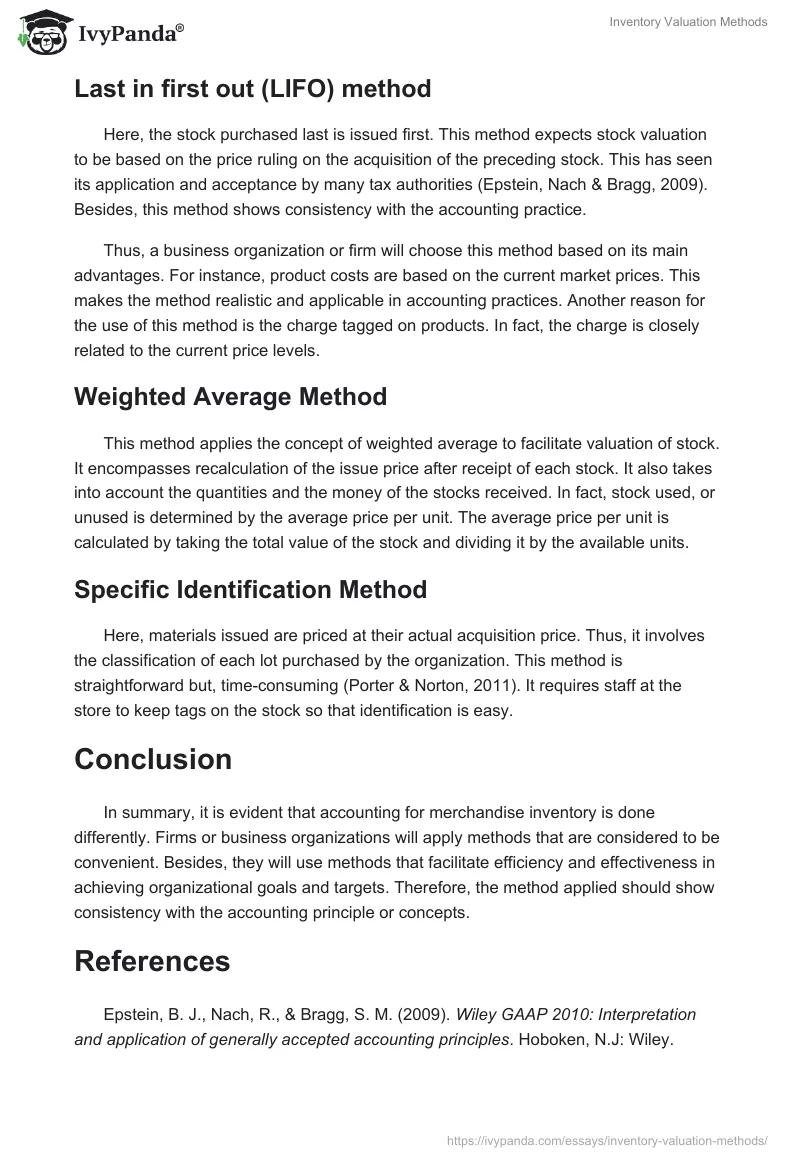Introduction
All business organizations have different methods of valuing their stock. This is aimed at ensuring that the right price is used in issuing stock. For instance, it will not be appropriate for a firm to make losses by issuing stock at a lower price than purchasing price.
Besides, a business organization has to decide on the method of inventory valuation. This is aimed at attracting a monetary value in the store. This is useful in costing output, state costing and decision making processes. Thus, this paper will highlight some of the methods used in valuing inventories.
First in first out (FIFO)
This is an inventory method that is used to value stock based on the assumption of first in first out. Stock that is purchased first is the one that is issued first. The price of the inventory issued is determined by the price of the first stock. In addition, the value closing stock is done at the latest cost.
This method has many advantages. This has facilitated its increased use in many firms. For instance, it is a realistic system or method of evaluation. Here, the oldest items are issued first followed by the newest items. Furthermore, the method’s calculations are easy whenever there are no fluctuations in the price of materials.
This method ensures that the closing stock value reflects the latest cost (Khan & Jain, 2008). Thus, it reflects the current market values relating to the product of an organization. What is more, this method is accepted by many tax authorities because of its consistency with accounting concepts. For instance, it complies with accounting principles such as IAS and IFRS.
Last in first out (LIFO) method
Here, the stock purchased last is issued first. This method expects stock valuation to be based on the price ruling on the acquisition of the preceding stock. This has seen its application and acceptance by many tax authorities (Epstein, Nach & Bragg, 2009). Besides, this method shows consistency with the accounting practice.
Thus, a business organization or firm will choose this method based on its main advantages. For instance, product costs are based on the current market prices. This makes the method realistic and applicable in accounting practices. Another reason for the use of this method is the charge tagged on products. In fact, the charge is closely related to the current price levels.
Weighted Average Method
This method applies the concept of weighted average to facilitate valuation of stock. It encompasses recalculation of the issue price after receipt of each stock. It also takes into account the quantities and the money of the stocks received. In fact, stock used, or unused is determined by the average price per unit. The average price per unit is calculated by taking the total value of the stock and dividing it by the available units.
Specific Identification Method
Here, materials issued are priced at their actual acquisition price. Thus, it involves the classification of each lot purchased by the organization. This method is straightforward but, time-consuming (Porter & Norton, 2011). It requires staff at the store to keep tags on the stock so that identification is easy.
Conclusion
In summary, it is evident that accounting for merchandise inventory is done differently. Firms or business organizations will apply methods that are considered to be convenient. Besides, they will use methods that facilitate efficiency and effectiveness in achieving organizational goals and targets. Therefore, the method applied should show consistency with the accounting principle or concepts.
References
Epstein, B. J., Nach, R., & Bragg, S. M. (2009). Wiley GAAP 2010: Interpretation and application of generally accepted accounting principles. Hoboken, N.J: Wiley.
Khan, M. Y., & Jain, P. K. (2008). Cost accounting and financial management for CA Professional Competence Examination. New Delhi: Tata McGraw-Hill Publishing Company Ltd.
Porter, G. A., & Norton, C. L. (2011). Financial accounting: The impact on decision makers. Australia: South-Western Cengage Learning.


